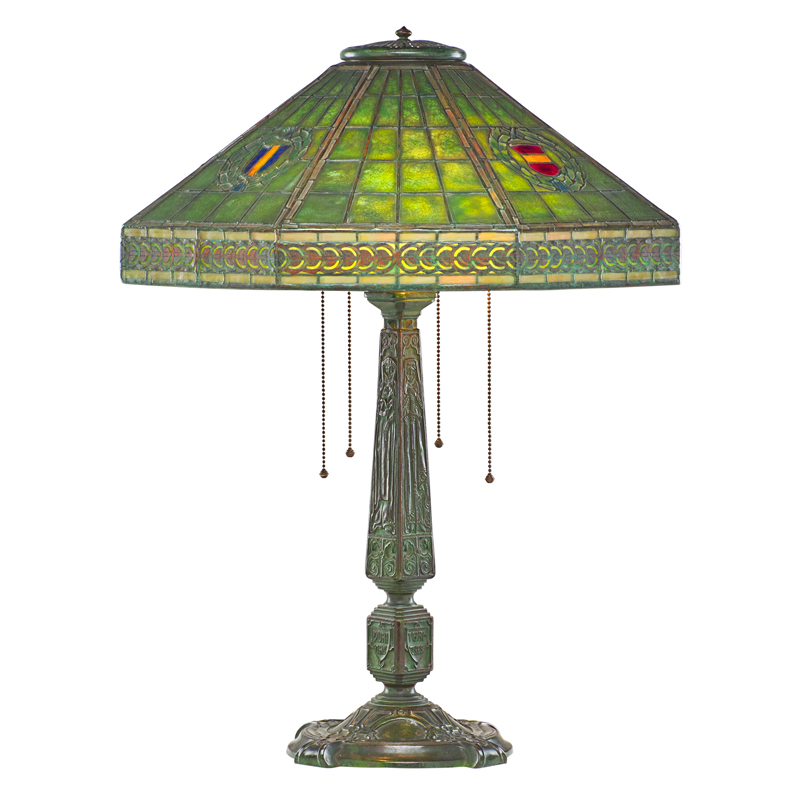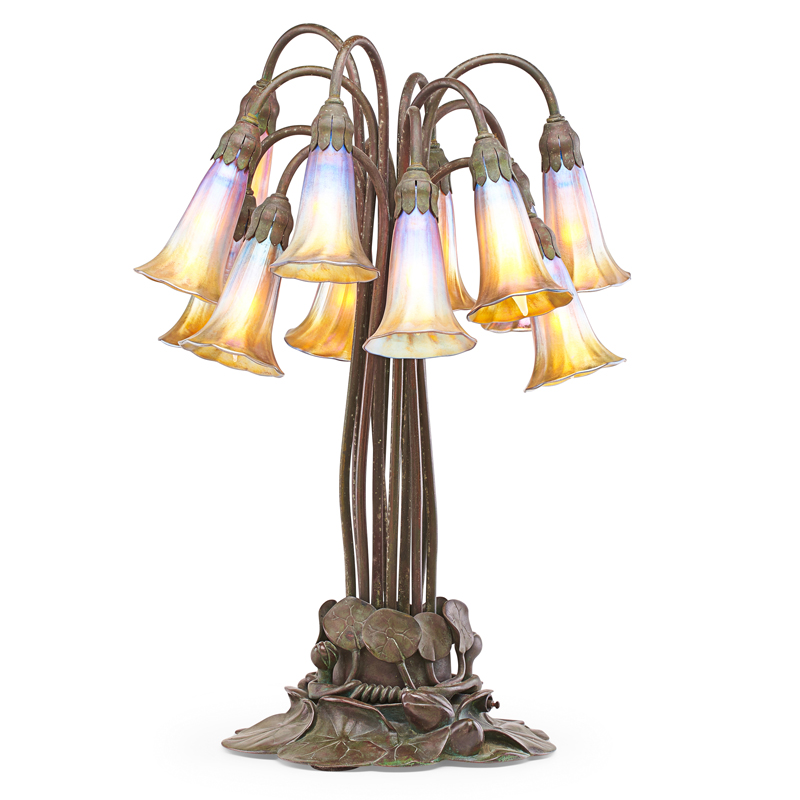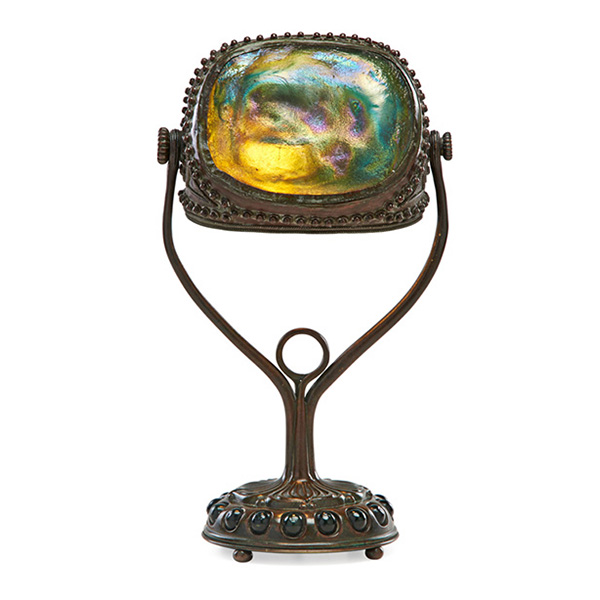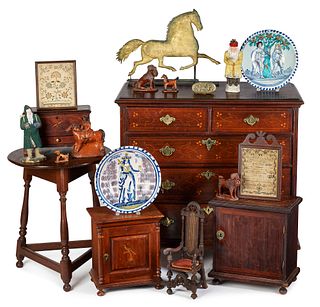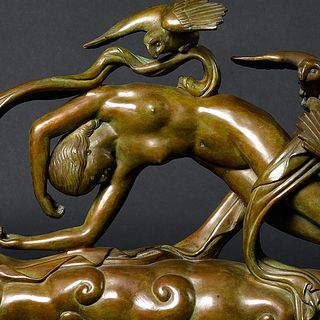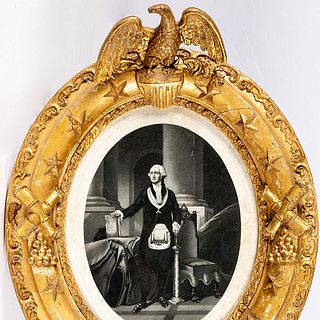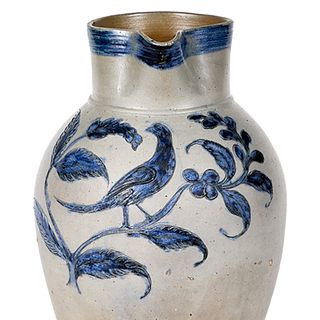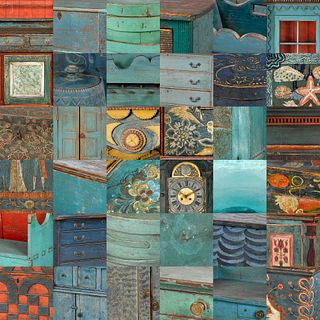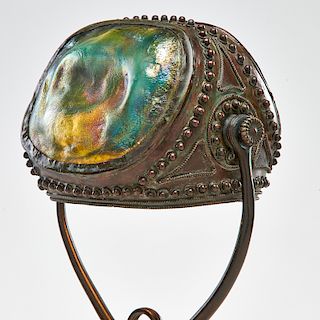Bidsquare Talks Tiffany Studios with David Rago
The natural world, and mankind’s place as an instinctive maker in that world, was, for a time, on the verge of being forgotten. During the late Victorian period in England, anxieties surrounding industrialized life triggered a bold reassessment of handcraftsmanship. The threat of cheap factory labor compelled designers and artists, who saw decorative expertise fading in the background of mechanization, to advocate reform and promote the advancement of the designer as craftsman. This shift, known as the Arts and Crafts movement, sought to create environments that incubated talent and upheld the cultural importance of fine workmanship. Similarly, the American Arts and Crafts movement followed British ideals and resulted in the birth of several utopian communities who cultivated fields such as woodwork, pottery, textiles, and metalwork.
Then, in the 1880s, an outgrowth of the design reform emerged. There was a "New Art" that began wrapping its' sensuous vines around European and American aesthetics - Art Nouveau. This development advocated nature as the triumphant source of all inspiration and branched off to explore a distinct style of its own within all applied arts. All the while, as these design philosophies continued to expand, a man by the name of Louis Comfort Tiffany thrived in running an enterprise of his own, where quality craftsmanship, the Art Nouveau style, and production became flawlessly fused together. Louis Comfort Tiffany, the founder of Tiffany Studios - a design firm producing blown-glass vases, leaded-glass windows and lamps, pottery, jewelry, and more - became America's most acclaimed artist. His studio housed some of the most celebrated artisans in the country and, through revolutionary techniques and a passion for beauty, Tiffany Studios produced breathtaking and iconic decorative artworks of the early 20th century.
Lot 1107, Tiffany Studios, Rare Old English table lamp; Estimate $30,000-$40,000
On May 18, Rago Auctions' Early 20th C. Design sale will feature an exciting group of Tiffany Studios selections ranging from picture frames and candelabrum's to rare glass lamps. Here to provide us with insights on a few of the upcoming highlights is David Rago, the founder of the Rago Arts and Auction Center and an expert appraiser for the PBS series, Antiques Roadshow, where he specializes in decorative ceramics and porcelain.
BSQ: Lot 1107 possesses unusual elements from shade to base. Right away, one notices the motif of heraldic shields that embellish the shades’ panels. Is it safe to assume that this lamp was commissioned as a family heirloom? If so, how often do we see that happen with antique Tiffany Studios lamps?
DR: My understanding is that, while rare, this is a production lamp and not the only such example. With that said, the condition and quality are top notch. The patina, for example, in the base, shade, and heat cap, is rare green and in perfect condition. This is a most unusual lamp and the condition is unassailable.
Lot 1270, Grueby;Tiffany Studios Rare table lamp; Estimate $17,500-$22,500
BSQ: Lot 1270 blends two of the most influential Art Nouveau makers of the early 20th century; Grueby and Tiffany Studios. Can you tell us more about the collaborative designs that united these companies?
DR: Tiffany used Grueby bases for their lamps and I’ve seen original catalogues that specified such arrangements. However, not all of these combinations were original of the period even though both elements were made about the same time. The Arts and Crafts styled shades proved an excellent fit with the organic naturalism espoused by the Grueby Pottery Company.
Lot 1100, Tiffany Studios, Twelve-light Lily table lamp; Estimate $15,000-$20,000
BSQ: Lot 1100 boasts an iridescent bouquet of twelve, wild stem lilies rising out of a detailed bronze pond. Lily-themed lamps can be seen with as few as two flower sockets in one design. As is the case with real flowers, the more you order from the florist the more expensive the display! Does that logic apply when appraising ‘Lily’ lamps?
DR: More is more. These typically sell for about $1,500 per shade, though the sort of base holding them factors in to some degree. The shades alone, if good examples, can bring about $1,000 each. But yes, the rule of thumb, with an average base and average shades, (remembering that Tiffany didn’t really do average; his production standards even on an off day were world class), are about $1,500 per light.
Lot 1101, Tiffany Studios Fine early 'Turtleback' table lamp; Estimate $10,000-$15,000
BSQ: There are three ‘Turtleback’ desk lamps featured in the May 18 catalog; lots 1103, 1101, and 1102 as well as one 'Turtleback' candle lamp (lot 1112). What exactly makes these four lamps part of the ‘Turtleback’ lamp family? We would love to hear more about this particular grouping!
DR: Turtleback refers to the large pieces of iridized glass used in their manufacture. These can be found in gold, green, blue, and red, and their value increases in exactly that order. These can also be found in different sizes, though larger is generally better. These represent an interesting part of Tiffany’s production, part of more Arts and Crafts styled work, though I have definitely seen them augmenting Art Nouveau pieces as well.
Register to bid in Rago Auctions' Early 20th C.Design sale coming up on May 18th, here.
Additional upcoming sales at Rago include, Modern Design on May 19th, Modern Ceramics & Glass on May 19th, and The Smithsonian Visionary Benefit Auction, available to bid from April 24th-May 20th. All online bidding is available on Bidsquare.
Watch and learn more about David Rago and the Rago Arts and Auction Center:
______________________

David Rago, Founder of the Rago Arts and Auction Center
David Rago is the founder of the Rago Arts and Auction Center, one of the country's principal specialty auction houses, and is an expert appraiser for the PBS series, Antiques Roadshow, where he specializes in decorative ceramics and porcelain. Rago has been a specialist in American and European 20th-century decorative arts and furnishings for 35 years and has authored over 500 magazine and newspaper articles and five books on the subject, including his most recent two works, The Arts and Crafts Collector's Guide, for Peregrine-Smith; and the Official Price Guide to American Arts and Crafts, for Random House. Rago lectures in his specialty at major conferences across the United States.
- Preview the December Doyle+Design Auction: A Celebration of Modern & Contemporary Mastery
- Billings Winter Design 2025: A Celebration of Modern Mastery Across Eras
- The Ultimate Holiday Gift Guide: Luxe Finds From Bidsquare’s Finest Auctions
- Fine & Antique Jewelry Sale: A Curated Journey Through Craftsmanship & Design
- Upcoming Auction Spotlight: Doyle’s Fine Art: 19th Century & Early Modernism
- Entertain with Style This Holiday Season: Highlights from Doyle’s December 8 Auction
- Six Standout Lots from Newel’s Fine Jewelry, Timepieces & Luxury Handbags Sale
- Artist Spotlight: Roy Lichtenstein, Pop Art’s Master of Bold Lines & Bigger Ideas
- Discover the Warmth of Pennsylvania Impressionism: Nye & Co.’s Dec. 3 Auction Features the Collection of Nancy & Robert Stein
- Inspired by Cape Cod: The Artists Who Paint Its Light, History, and Character



 EUR
EUR CAD
CAD AUD
AUD GBP
GBP MXN
MXN HKD
HKD CNY
CNY MYR
MYR SEK
SEK SGD
SGD CHF
CHF THB
THB